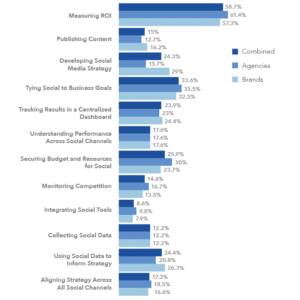Any business that needs clients needs to reach out with a marketing strategy, and any business that operates in this day and age should make it a priority to measure their marketing ROI. But you can’t rely on a static solution and leave it alone, as our marketing environment continues to change rapidly. Government regulations can allow new forms of customer outreach or restrict preexisting ones, such as through anti-spam legislation. New innovations in consumer products open up entirely new markets and new avenues for marketing, such as consumer virtual reality. Greater purchasing power from an increasingly wealthy world means scaling a campaign remains an ever-present, but evolving concern.

Don’t let your money fly away. Make informed ROI calculations!
These are but some of the major factors that make marketing one’s goods and services an ever-changing process. If you’re a chief marketing officer, then this is a huge headache for you! You’ll be expected to provide, on a regular basis, quantifiable evidence that the marketing investments you’re in charge of are contributing to real business outcomes. In the quest for such proof, one of the most popular metrics for marketers is Return On Investment (ROI). Roughly: a calculation of how much benefit an organization gains from an investment in a particular activity.
Pretty straightforward, right? Well, not quite.
The difficulty with ROI calculation is how varying its definitions are, and what metrics are used to establish “benefit”. For example, let’s say you’re evaluating ROI based on the success of particular conversion funnels, as an active Twitter presence. Do you look at total Twitter activity as-a-whole per week, or do you break that down further into market reaction to particular Twitter actions, such as retweets or rich media Tweets (for example, using funny GIFs)? Differing approaches can make the Twitter ROI look lucrative or like a cost center for your business.
This makes the task of connecting marketing to revenue or other business outcomes harder than it already is or should be.

The list of challenges marketers on social media face, according to an industry survey. Measuring ROI is, by far, the greatest challenge. Source: SimplyMeasured State of Social Media Marketing, 2017
How do we avoid these issues? By clearly defining measurement goals!
ROI is a powerful tool, but only when narrowly focused on crafting a particular tactic for particular business activity. For example, using ROI to evaluate the value of a particular email marketing campaign to gain interest in a free demo of one’s services is a great idea. Extending an ROI calculation too broadly, in an effort to use it for wide-scale strategizing, risks losing the important context of particular marketing efforts for particular goals.
Questions to ask when defining measurement goals
In the face of growing complexity and relentless financial pressure around ROI, chief marketing officers have four basic questions to ask themselves and their departments:
1. How do your consumers get their information?
We live in an information-saturated world. Individuals stay updated by different streams; social media, radio, blogs, and family members. Depending on your field, your potential customers might spend more time getting information from some sources over others. For example, if you are the chief marketing officer of a video game design company, you might be interested in concentrating marketing efforts on Reddit, where you can find communities of gaming enthusiasts, or on video game review websites, where you’ll find readers who are looking for a good game to buy.
2. When you make a marketing decision, is it backed up rationally?
Studies in human psychology and the reams of data available for marketers have made what used to be an art science. But that does not mean that we are always making the right decision with the data at hand.
You need to ensure that good judgment and expertise is on hand when you are working on a campaign. Don’t tunnel in on a particular goal and lose sight of the big picture. Make sure that you always keep a result in mind, don’t get emotionally invested in an inefficient campaign, and stay clear-headed.
3. Which metrics are right for the job?
No metric for evaluating marketing success is going to be perfect. Some useful information, and some nuance will be lost in the translation from raw data to a “framed picture”. So focus on one or two metrics that work well for your business’s needs.
Let’s go back to the video game company example. You’re selling a new video game on the Google Play Store and the iOS App Store. You’re starting marketing for it from scratch. You set up a Google AdWords image campaign, focusing on specific video game review websites. You see spikes in clicks on those images that correlate with purchases of the game. In that situation, a “last click” metric might be worthwhile.
4. Are your metrics biasing certain data?
Again, no system is perfect. Some of the best analytics tool providers also run leading ad network tools. There is inevitable bias in metrics reported by these platforms! Google and Facebook are the classic examples of this phenomenon, where data even between the two platforms may not match due to different attribution models, conversion tracking setup, and reporting formats. Be sure that you are aware of the drivers of discrepancies, and seek help from an independent provider, where possible.
The Windsor.ai Advantage
As an independent advisor, Windsor.ai helps you to measure ROI in a sensible way with actionable results. Windsor.ai automates your data pipelines and integrates and brings all your data to life with advanced artificial intelligence. We rely on a customized approach that adapts to the nature of your business and consumer journey. Contact us for a free demo.
Starting Connect your Marketing channels to Windsor.ai!
You Might like to read:
Data driven attribution in 2024
Marketing Reporting: The past, present and future (templates included)
What is marketing data analytics and why do you need it?
70+ Marketing Dashboard Examples and Templates
